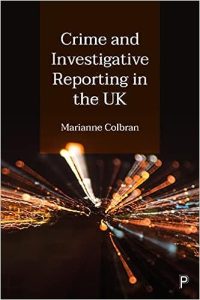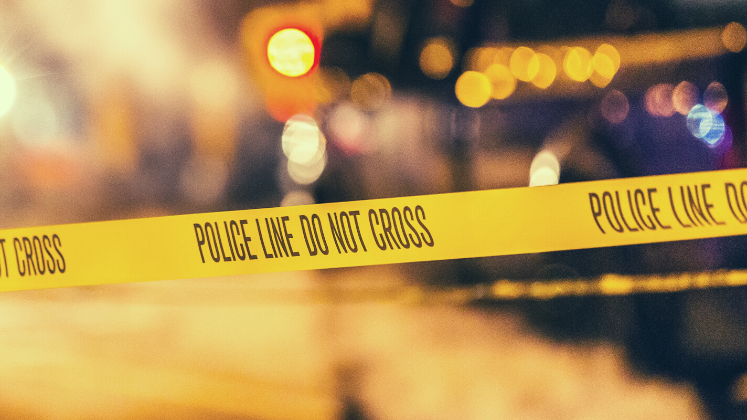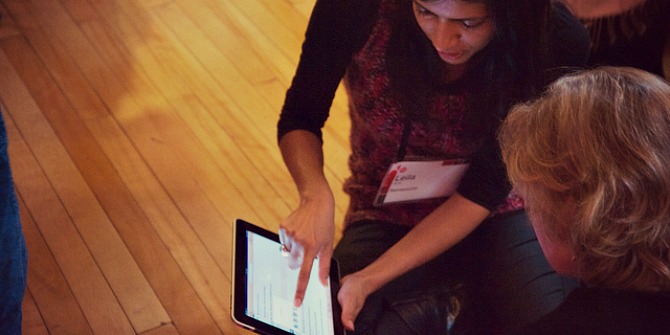In Crime and Investigative Reporting in the UK, Marianne Colbran charts how technology and culture have changed policing and news media over the past four decades. Colbran’s rich analysis is a valuable resource for readers worldwide on the rapidly changing landscapes of policing and journalism, writes Twinkle Siwach.
Crime and Investigative Reporting in the UK. Marianne Colbran. Policy Press. 2022.
 In recent decades, policing and the reporting of crime have changed rapidly. New technological developments have increased informational sources for news reporters, the police and the public, from the rise of video surveillance to the proliferation of news platforms, particularly those producing digital content.
In recent decades, policing and the reporting of crime have changed rapidly. New technological developments have increased informational sources for news reporters, the police and the public, from the rise of video surveillance to the proliferation of news platforms, particularly those producing digital content.
In the context of the UK, Marianne Colbran’s book on crime and investigative reporting is a significant contribution, resulting from in-depth research covering four decades. The book divides the changing police and press relationship into three phases: the 1980s to the 1990s (symbiotic relationship between the police and the press), the 2010s (breakdown of this relationship) and 2020 onwards (reimagining crime news).
Introducing the book’s object of study, Colbran cites important scholars in police and media studies such as Steve Chibnall, Robert Reiner, Chris Greer and Stuart Hall. Referring to their work, she argues for the relevance of crime news studies. From a network analytic perspective, one omission is the work of Manuel Castells whose theory on informational networks would have enriched Colbran’s discussion on “communication infrastructure theory network” (126).
Readers get a holistic understanding of emerging convergences and divergences between media forms and crime reporting.
The book provides a rich analysis of the social production of crime news through a review of literature and official reports (including the Leveson Inquiry into the culture, practices and ethics of the press and the Filkin report on police links to the press) alongside over 60 interviews with police officers, press officers, editors, national crime news reporters, journalists and managing editors on the new journalism start-ups. As a result of interviews with experts working in the field from eight years to over 30 years, readers get a holistic understanding of emerging convergences and divergences between media forms and crime reporting. She points out that a fast “changing media and cultural landscape” are offering “new opportunities for the public and the press” (9). The internet’s penetration into our everyday lives has triggered a switch from print to digital media, while slashed advertising revenue has caused many print outlets to shut down, as witnessed during the COVID-19 pandemic.
The police, too, are adapting to the changes brought about through digitalisation. As Colbran highlights, they are increasingly using social media to control communication flow to the public. However, in some cases (like the murder of George Floyd by police in 2020) Colbran points out that the public can post online prior to the police, harming their public image, and depriving them of foregrounding their own sanitised version of the event.
Police […] are increasingly using social media to control communication flow to the public.
The book charts the emergence of this new dynamic where the audience is actively participating in the “news making process” (13), sharing information and live footage with journalists. As Colbran states, the citizen has become a social network broadcaster (112) and the dominance of smartphones means that videos can be filmed and circulated easily. This model is prevalent for news organisations operating online or start-ups dealing with scarcity of funds or scant labour; they tend to depend on the public or local journalists. During the COVID-19 lockdown, journalists working under government restrictions invited videos from the public.
On the nature of sources, Colbran talks about two cultures of journalism: inner-circle and outer-circle journalists. The classification is based on access to and reliance on sources; the former group is highly dependent on police contacts while the latter has a wider pool of contacts. Colbran criticises inner-circle journalists as they write more police-friendly stories so as not to risk their relationship with the source. Meanwhile, outer-circle journalists are free of this compromising burden and can be more critical, and their work is therefore of more value to society.
In the context of increased competition among news outlets, particularly among tabloids, stories are often sensationalised, information is distorted, and events are trivialised.
This analysis could have been enriched by a deeper discussion about news media ethics since journalists are expected to ensure “fairness, objectivity and authenticity”, as argued by Indian media scholar and practitioner Paranjoy Guha Thakurta. In the context of increased competition among news outlets, particularly among tabloids, stories are often sensationalised, information is distorted, and events are trivialised. In the case of the death by suicide of a Bollywood actor in India, for example, a news channel leaked the personal chats of a suspect as “breaking news” by misrepresenting the content to gain television rating points and using unethical tactics to harass the suspect. In such cases, the line between news and “infotainment” is blurred, or as Colbran highlights, citing Greer and McLaughlin (2017), these news practices are best described as “trial by media” and “scandal hunting” (149). The persistence of such journalistic tactics and reporting and the need for scrutiny of unethical journalism could have been explored in more detail by the author.
The News International phone-hacking scandal in July 2011 […] led to the breakdown in communication flow between the police and press in the UK.
Readers may draw additional context from the chapter on the News International phone-hacking scandal in July 2011 which led to the breakdown in communication flow between the police and press in the UK. As a result of this crisis, in their interviews with Colbran, members of the press expressed concerns about inaccurate media reporting due to restrictions imposed by the Leveson and Filkin reports (86). Police respondents showed concern about how it had caused long term damage to police and press relations (87). Since both reports recommended recording of all contacts between the press and the police clamping down unofficial contact with the media, the police interviewed by Colbran felt that instead of controlling the leaks, the reports suggested extreme steps which rendered the press and the police relationship hostile. More recently, police are harnessing the increased digital presence of their organisations to break news to the public themselves, rather than passing information to journalists.
News stories today break and trend rapidly, and the constant, unfiltered stream of information can often lead to rumours, conspiracies and fabricated information. In India, the circulation of unverified news, images, and videos on social media platforms have increased, in the past years, the instances of intolerance and polarisation in the community. This includes “negative representation of marginalised communities” (152). For instance, a fast-paced media ecosystem created havoc for the Indian Muslims during the COVID-19 lockdown period when insensitive and biased media reporting labelled them as carriers of the virus, resulting in nation-wide unrest. Mobile journalism has altered the field of reporting and rendered the informational flow multi-directional while aiding help to police to track information. As the section on smartphone usage and the bystander effect emphasises, live video recording is changing how we witness crimes. In 2020, the bridal photo shoot of a Lebanese woman recorded the massive explosion in Beirut, the footage was used by news media organisations.
As the section on smartphone usage and the bystander effect emphasises, live video recording is changing how we witness crimes.
The book is skilled at reflecting changing relations between the police, press and public relations. Adding a subtitle such as, “An explorative study of police and media relations” could have helped to inform readers about the disciplinary focus of the work. That said, though the research pertains to the UK context, it is a valuable resource for scholars, police and media practitioners worldwide on the changing landscapes of crime, policing and reporting.
Note: This review gives the views of the author, and not the position of the LSE Review of Books blog, or of the London School of Economics and Political Science. The LSE RB blog may receive a small commission if you choose to make a purchase through the above Amazon affiliate link. This is entirely independent of the coverage of the book on LSE Review of Books.
Main Image: John Gomez on Shutterstock.
Read an interview with author Marianne Colbran about Crime and Investigative Reporting in the UK conducted by LSE Review of Books in 2022 here.








Interesting review thankyou!
great!